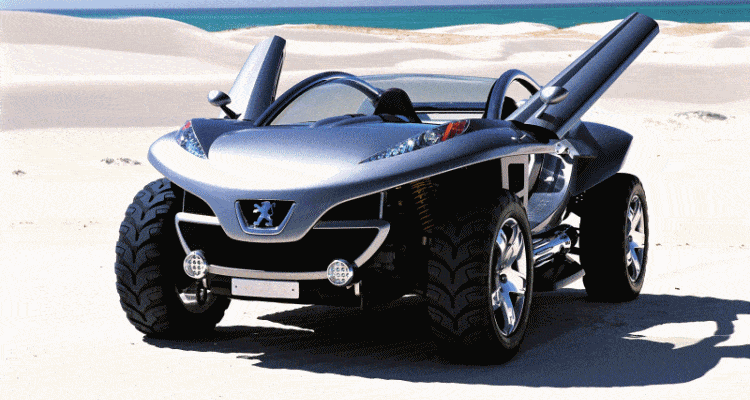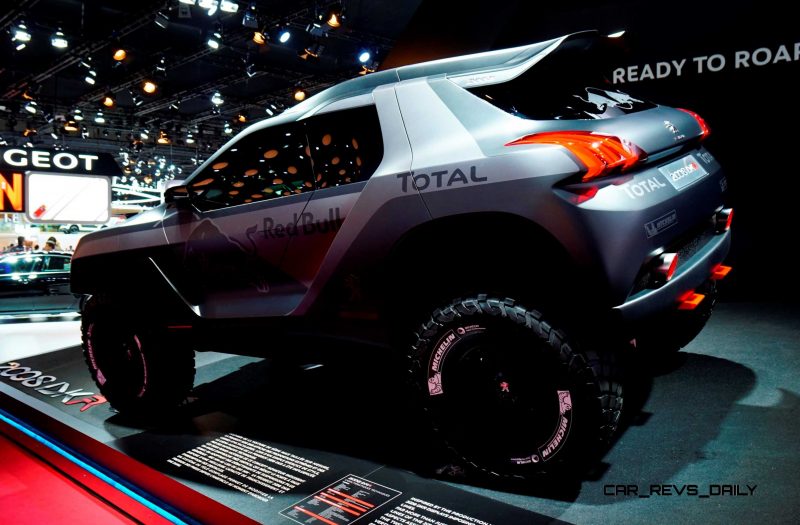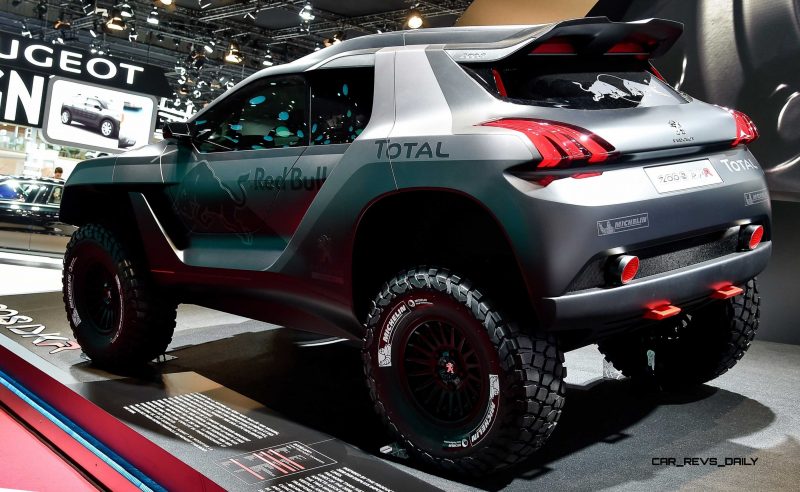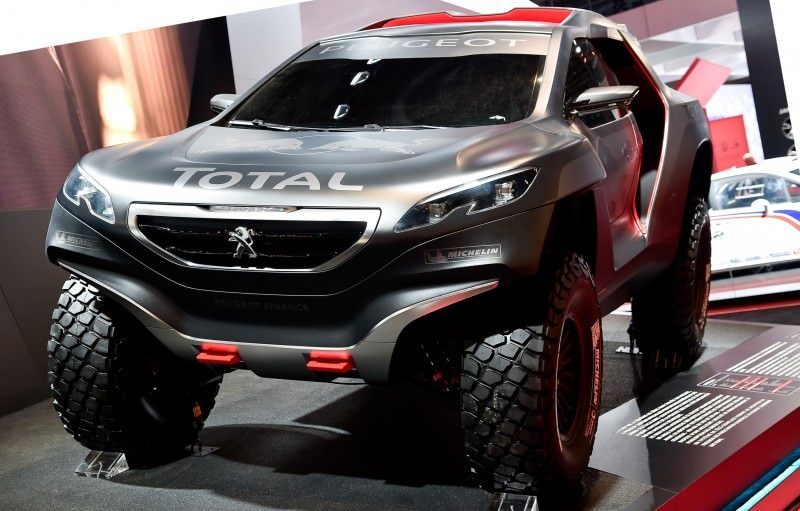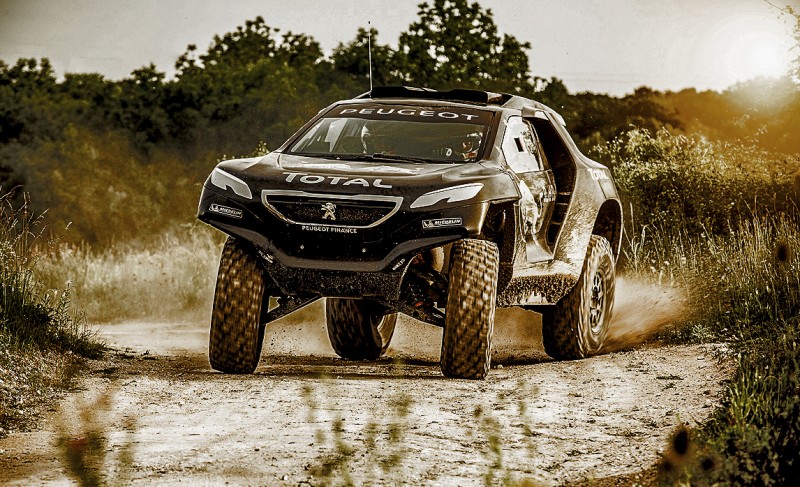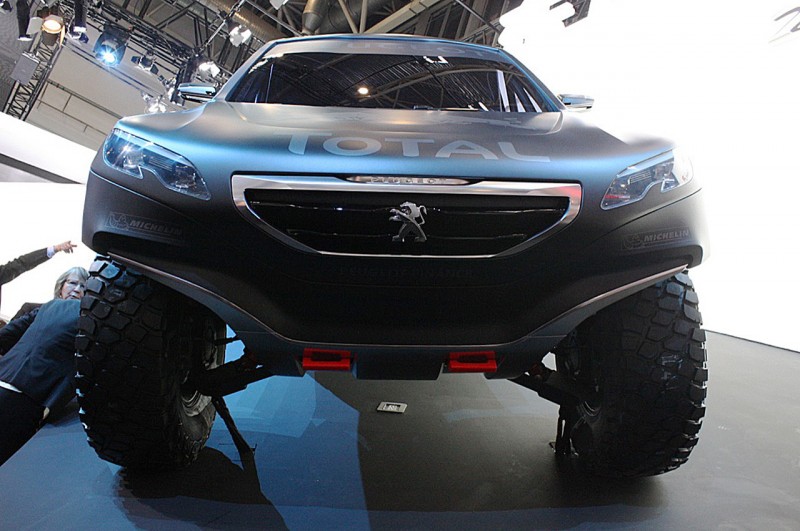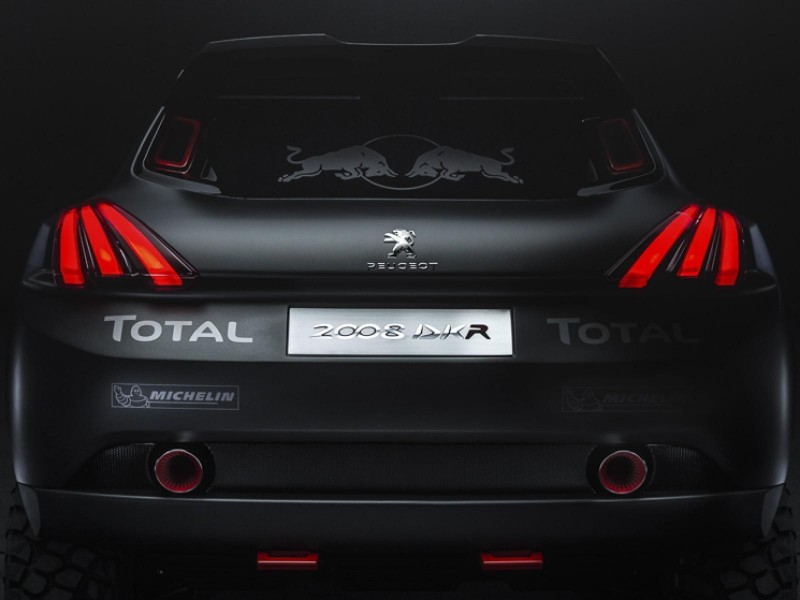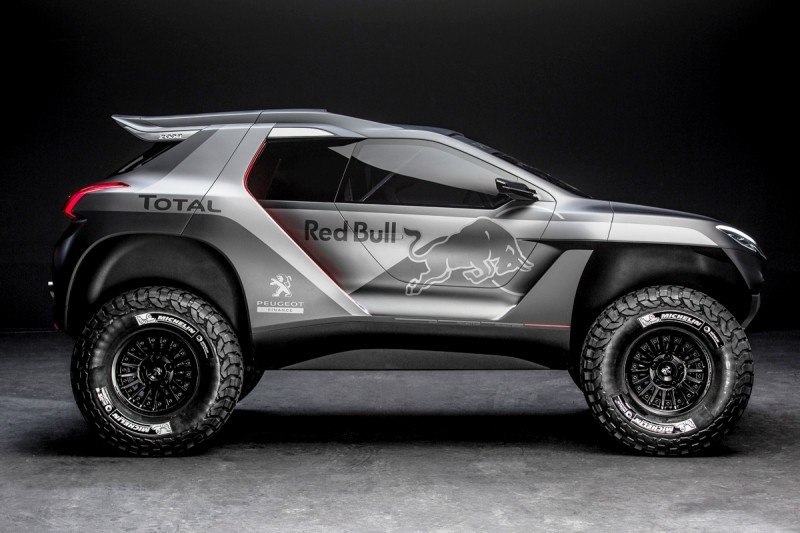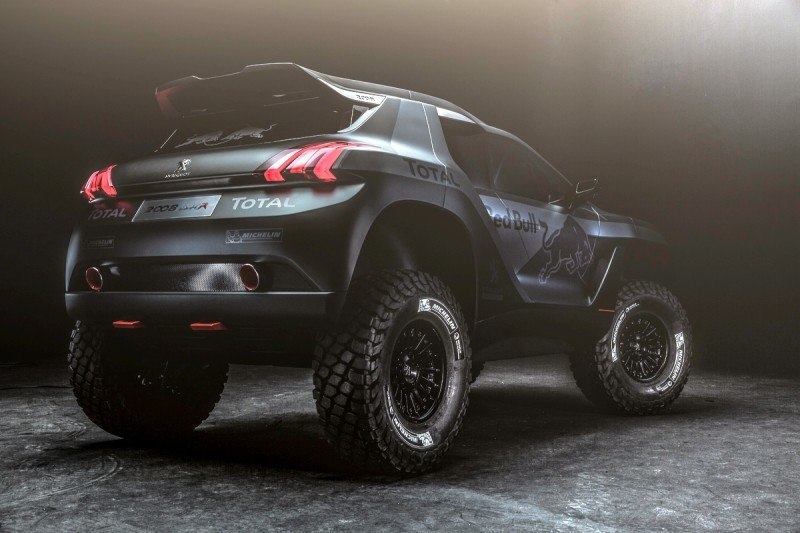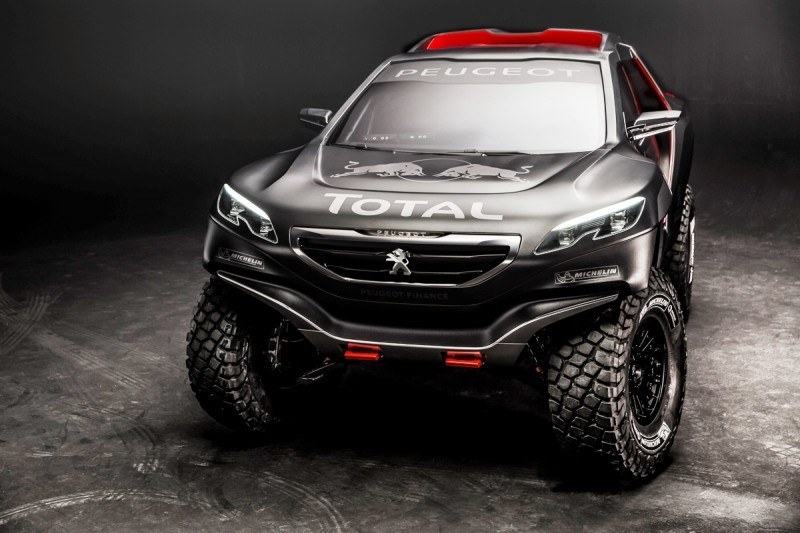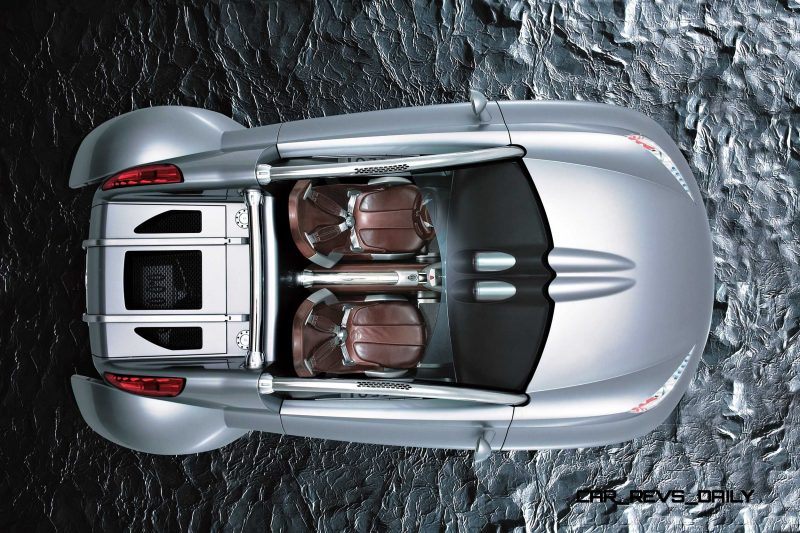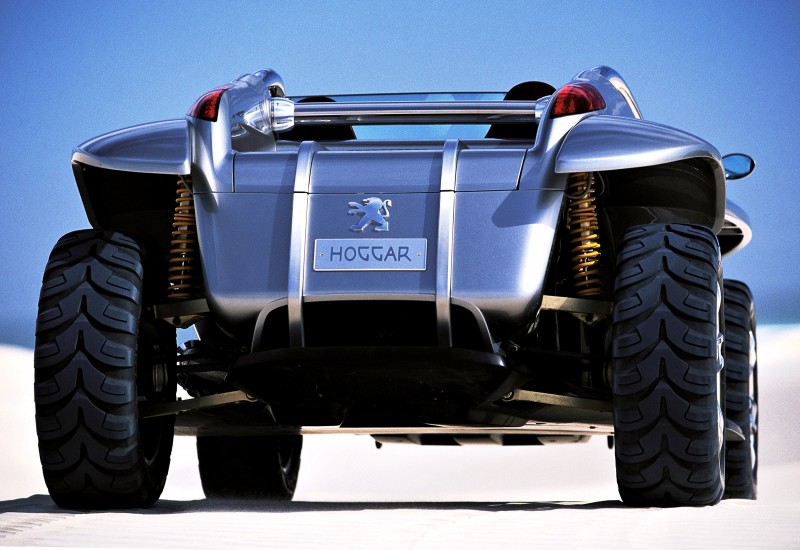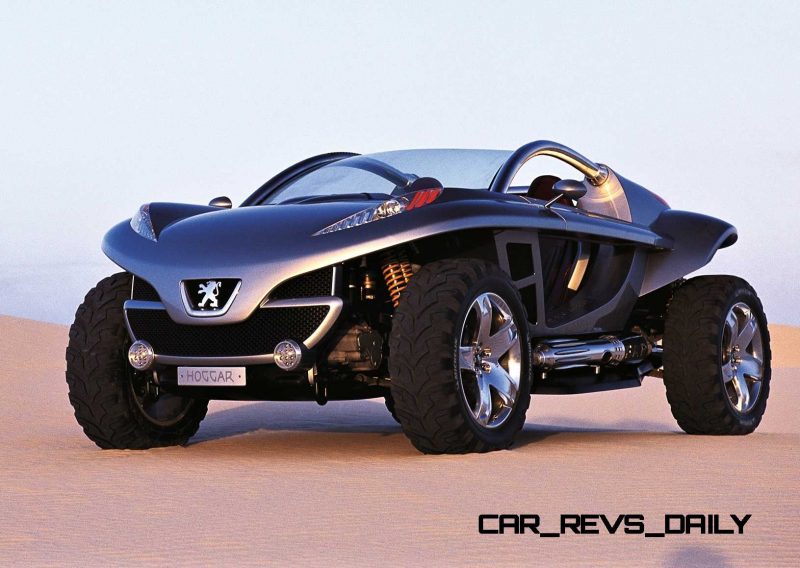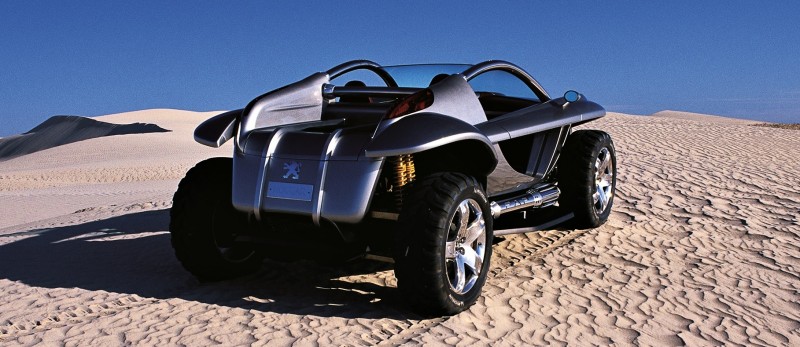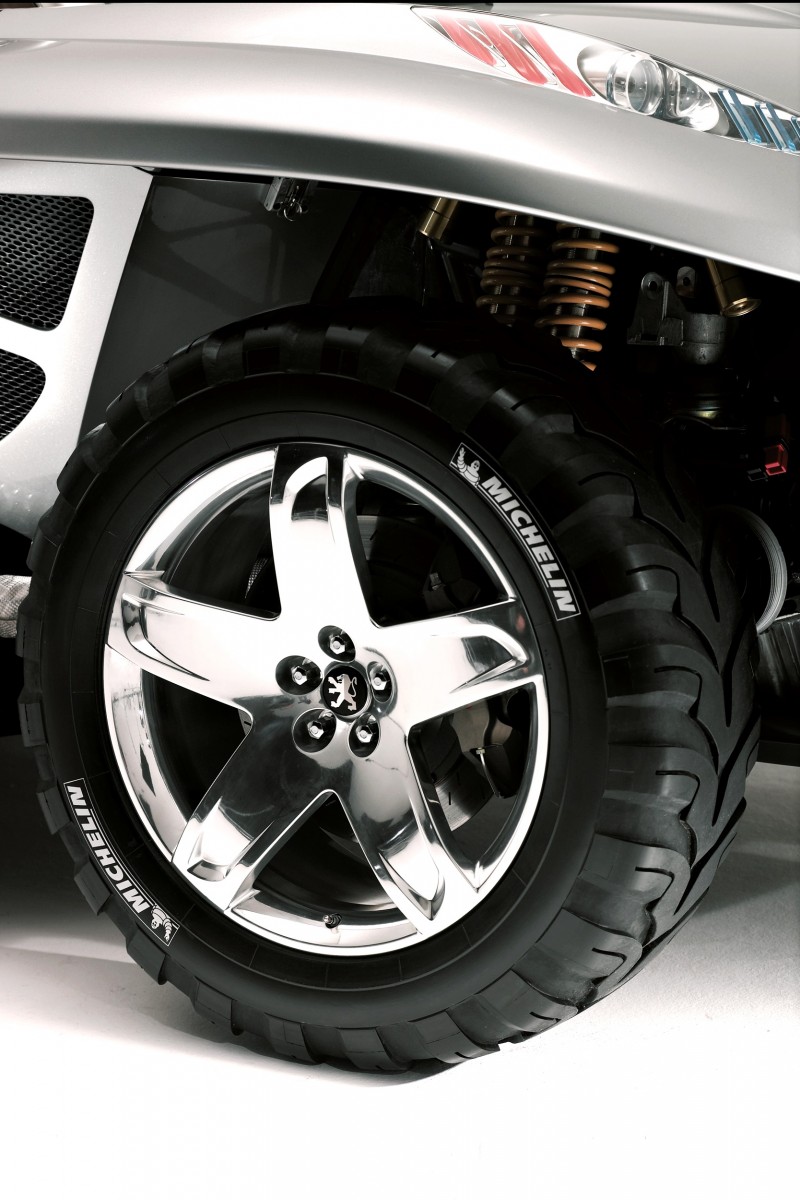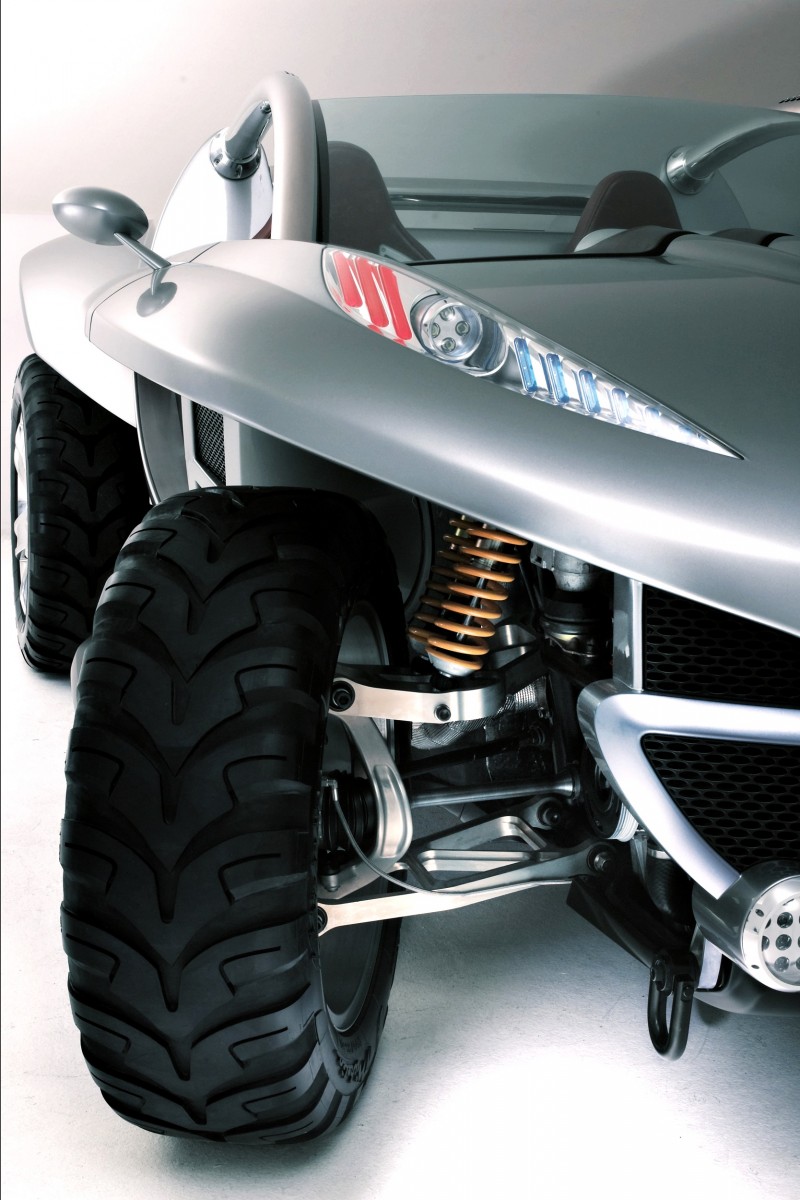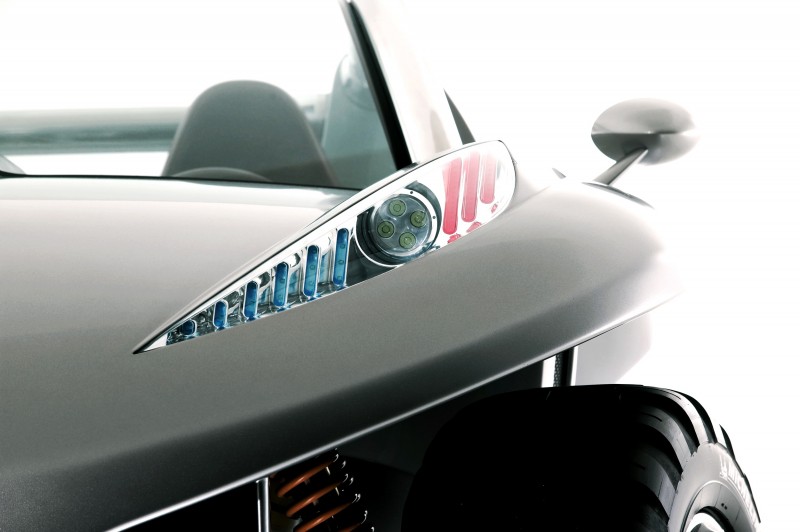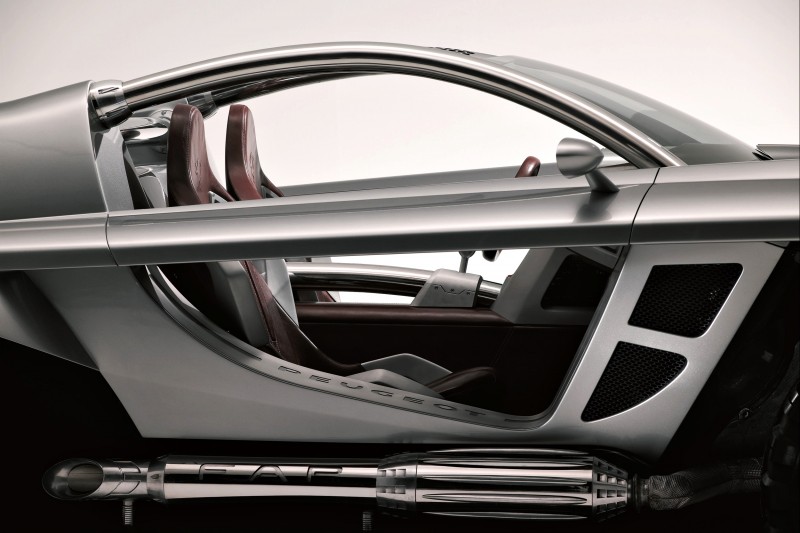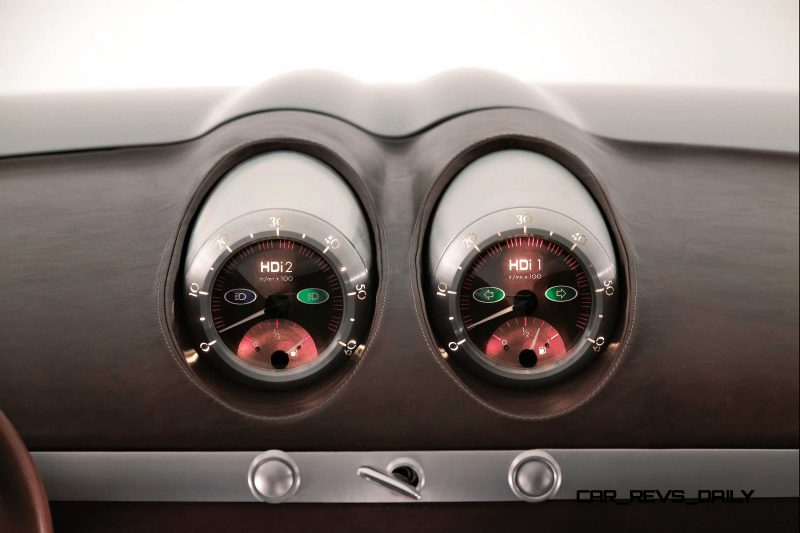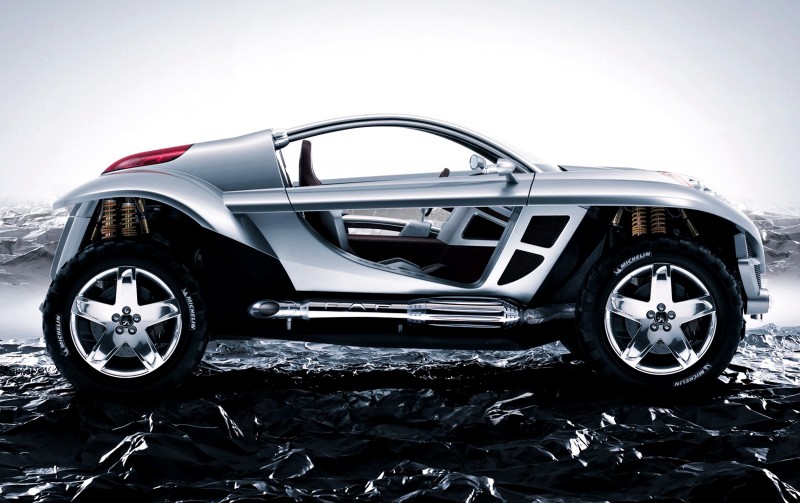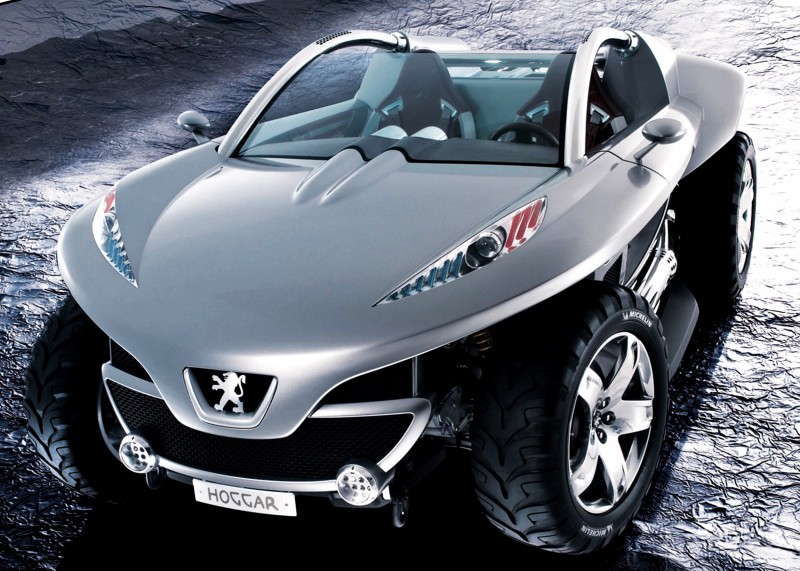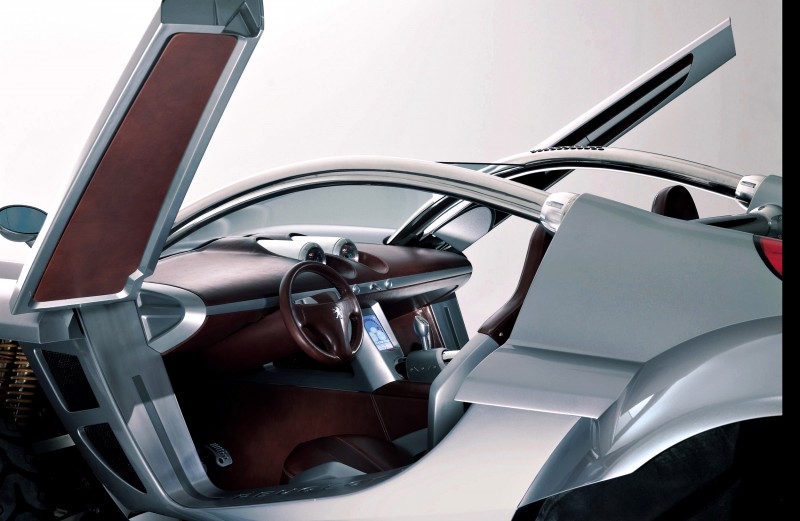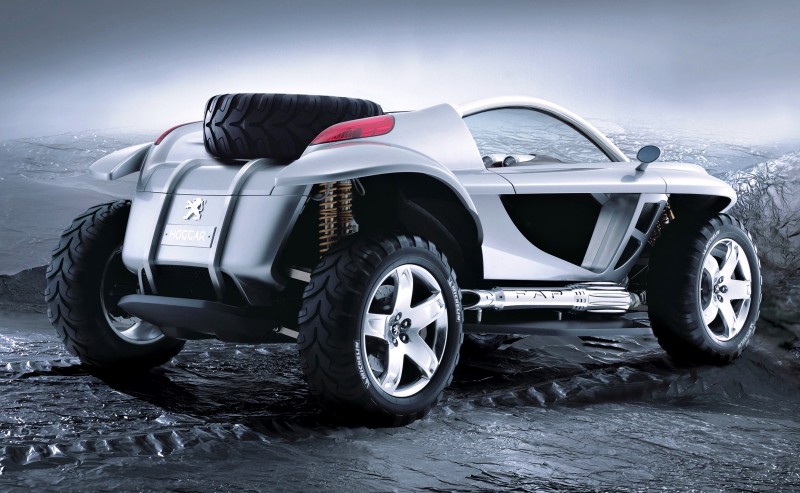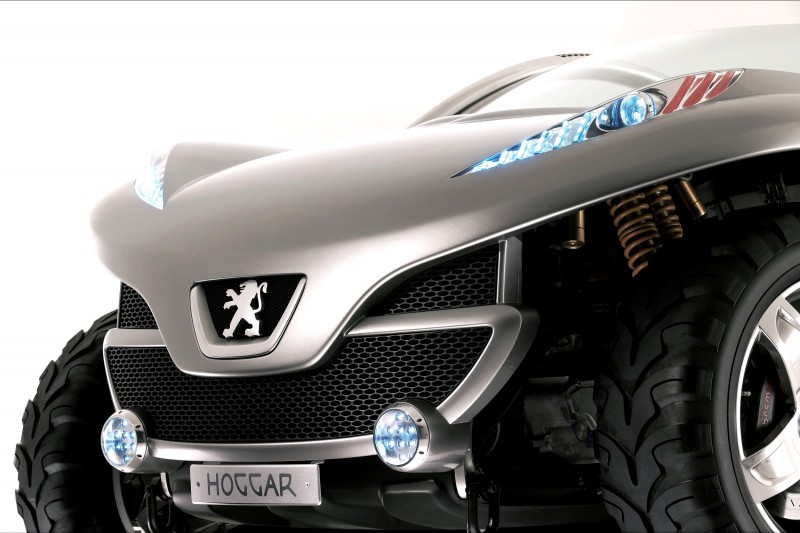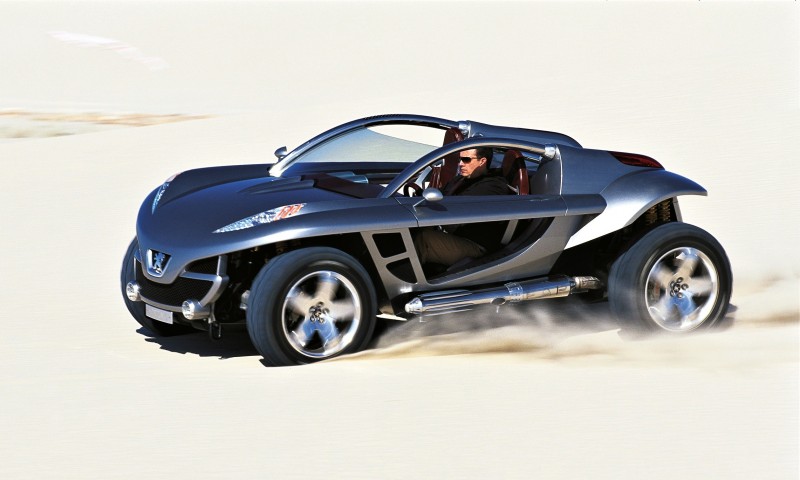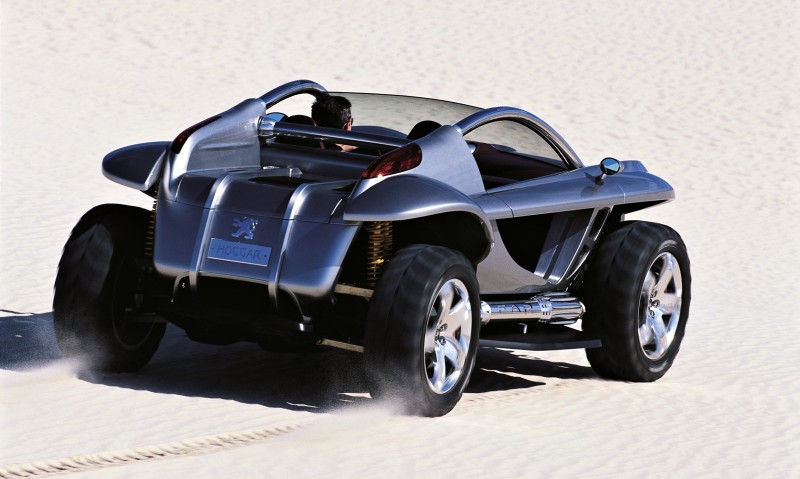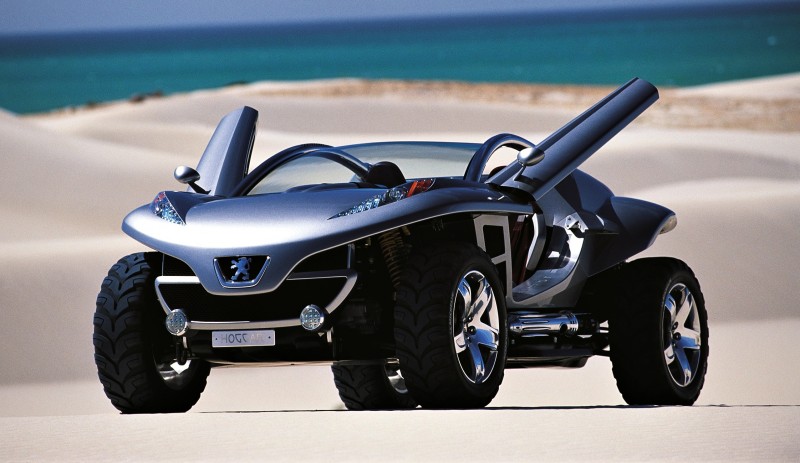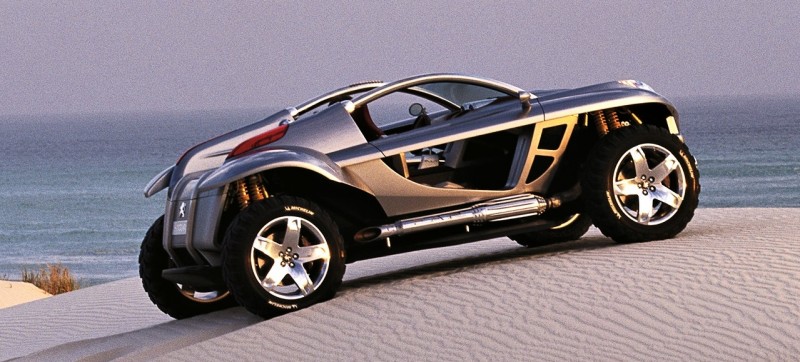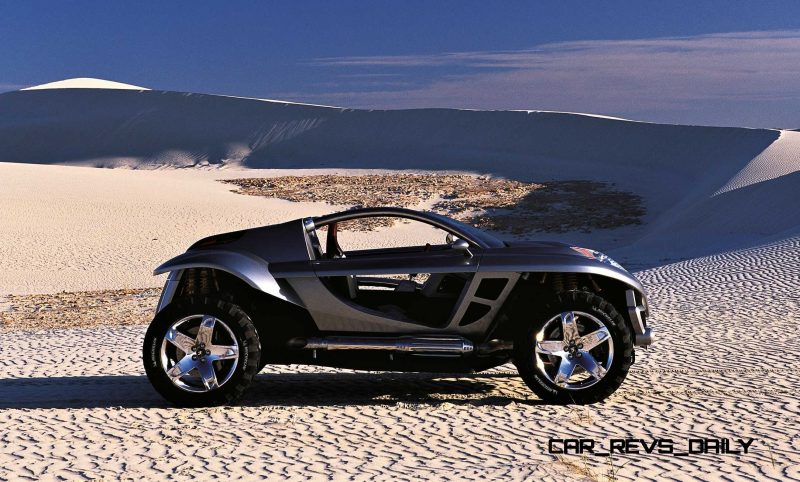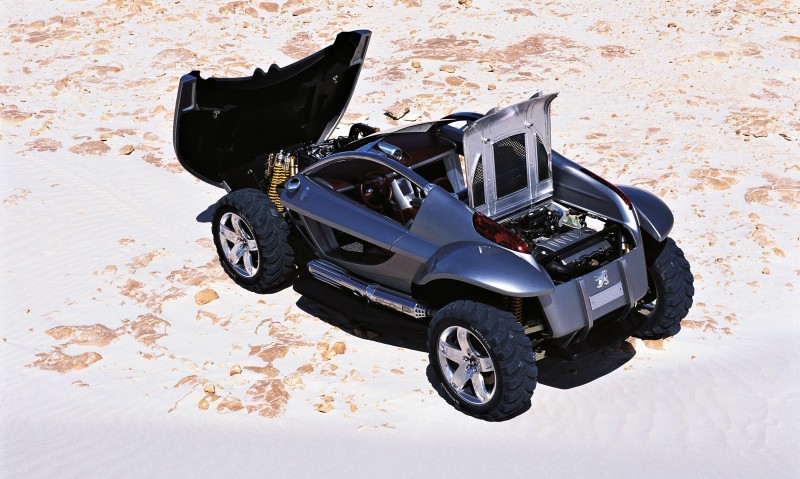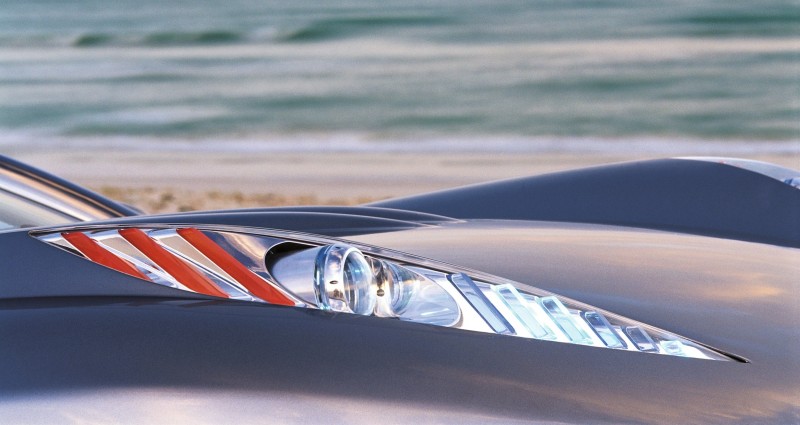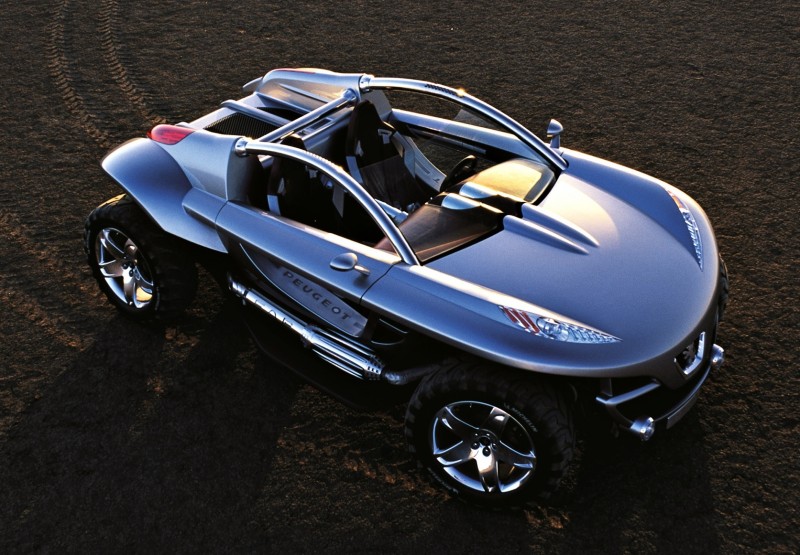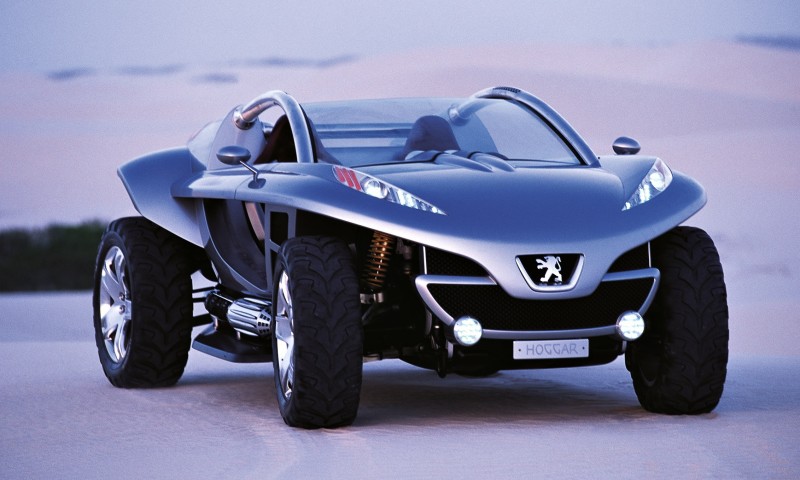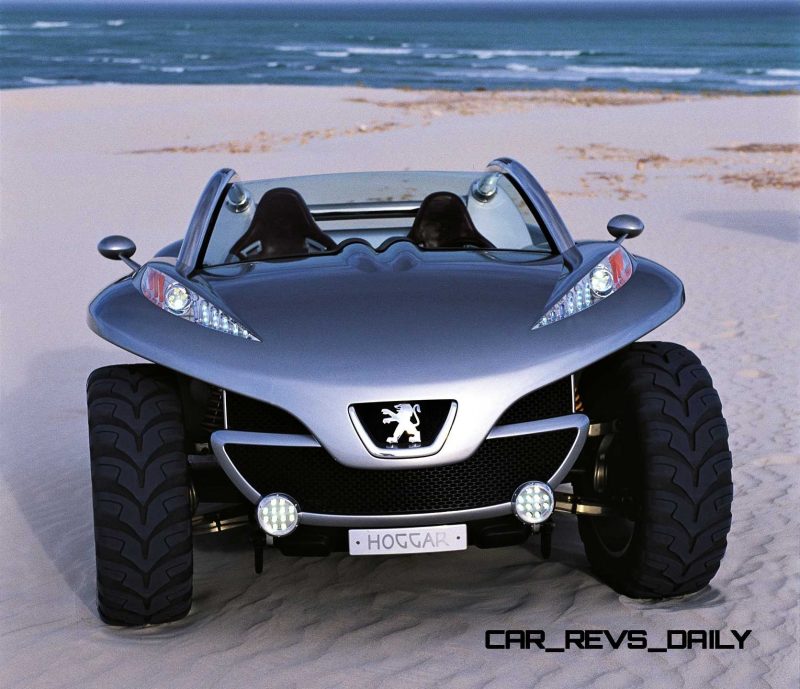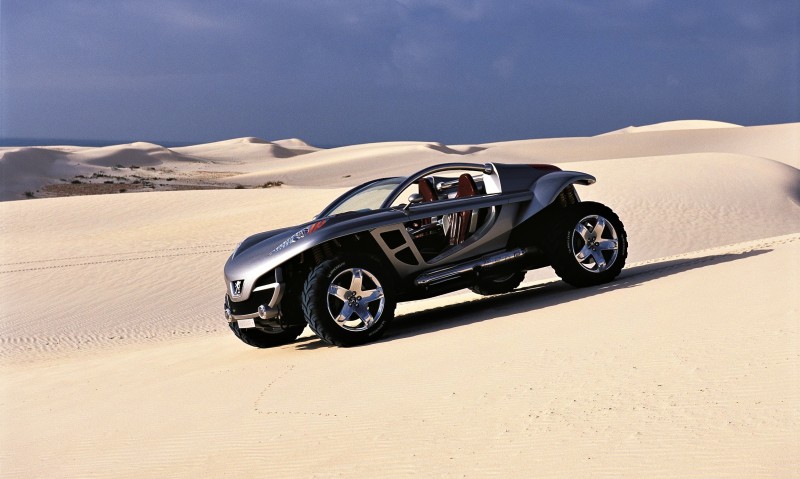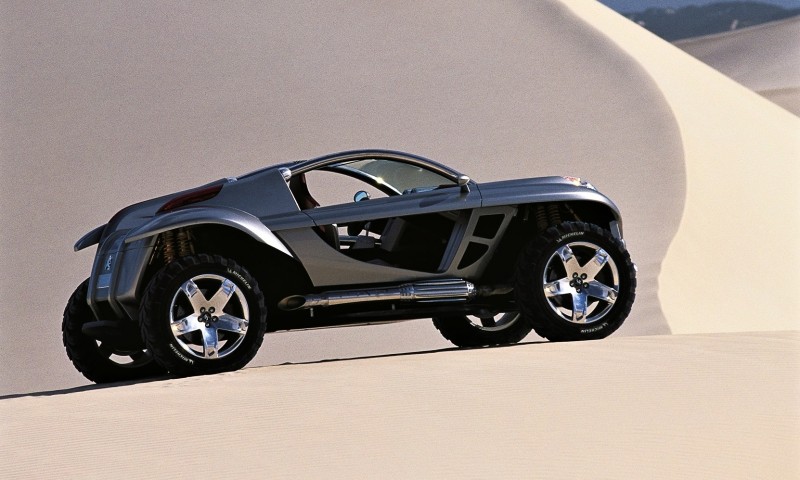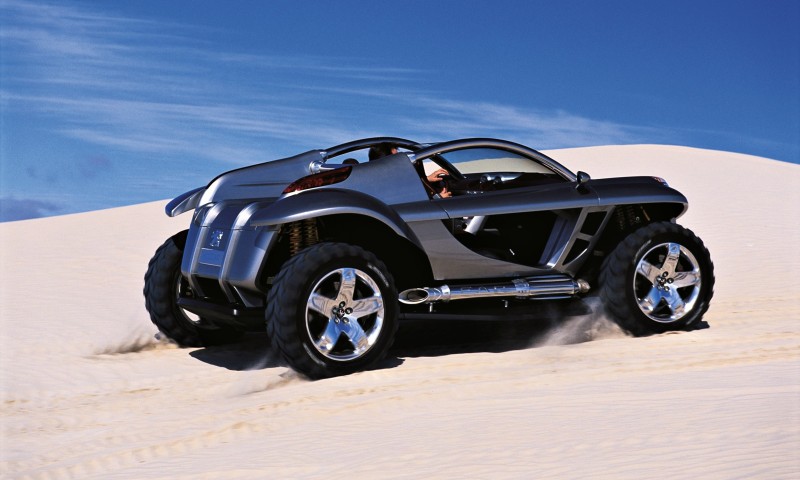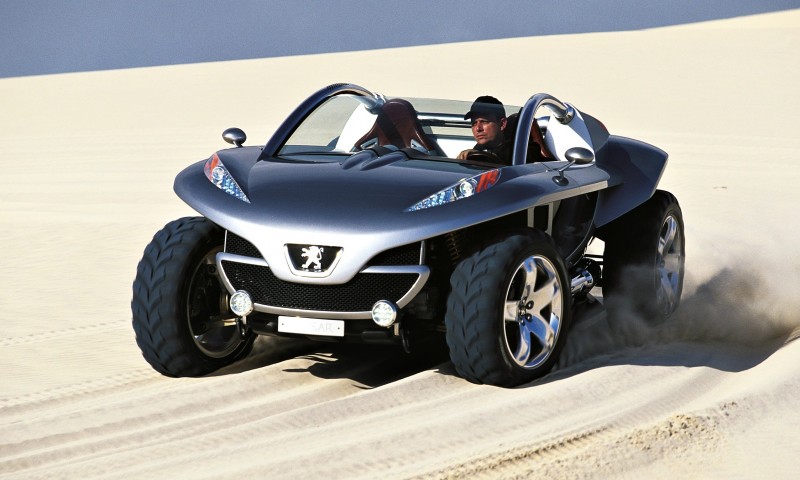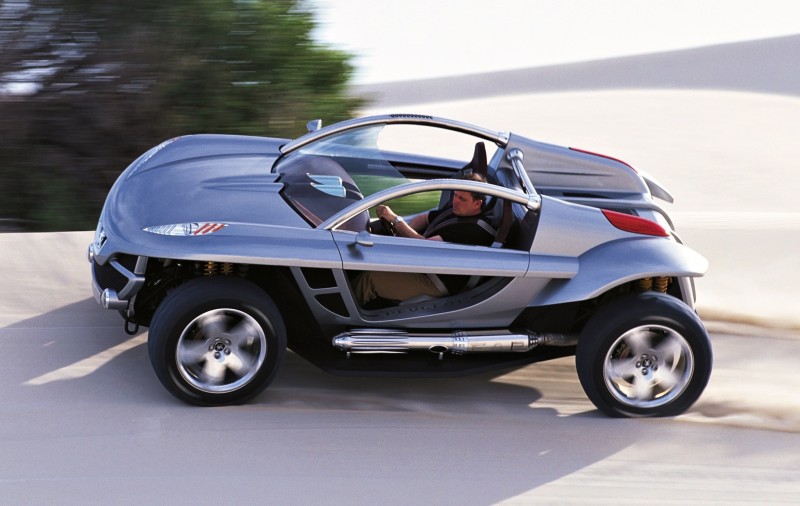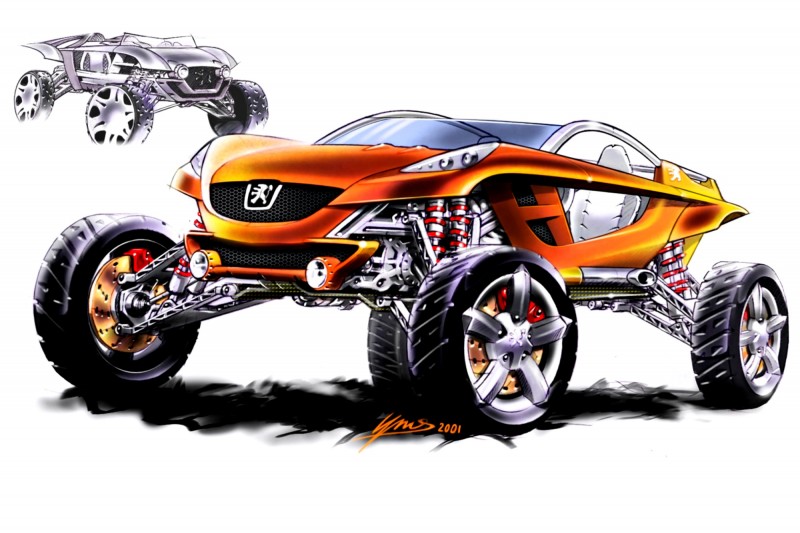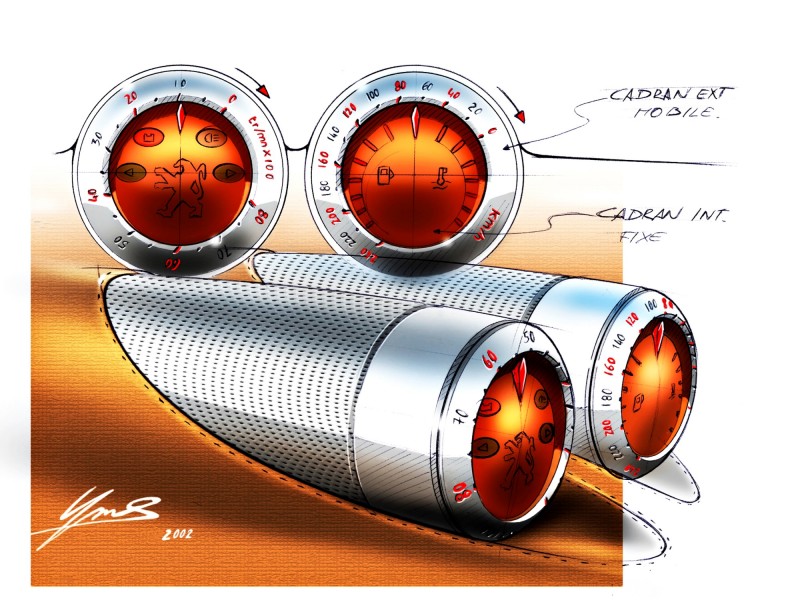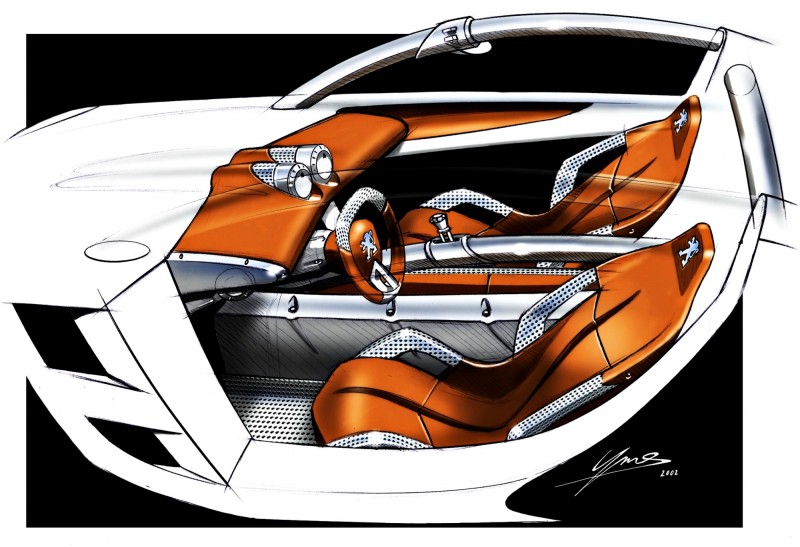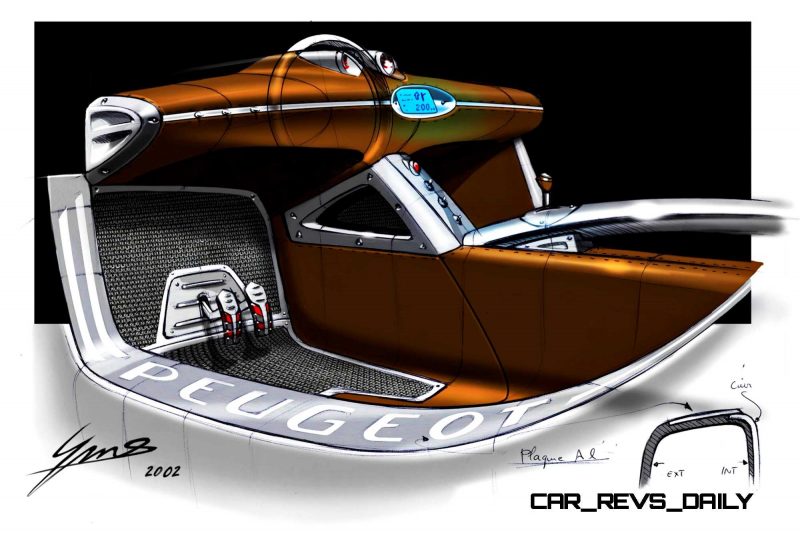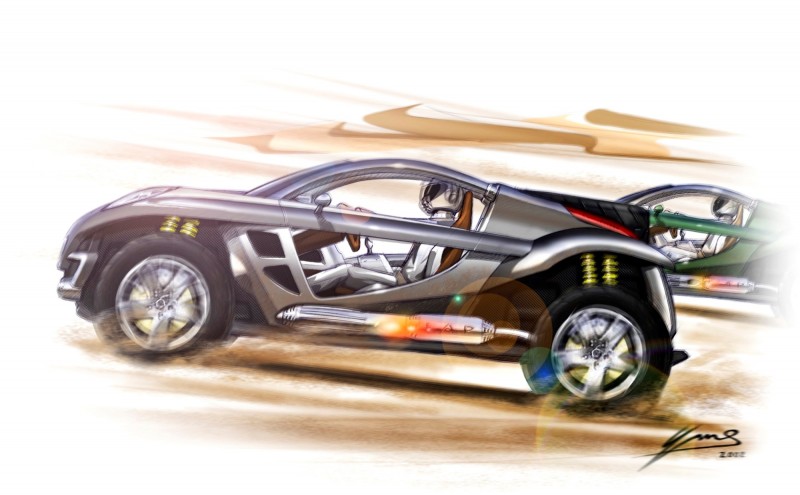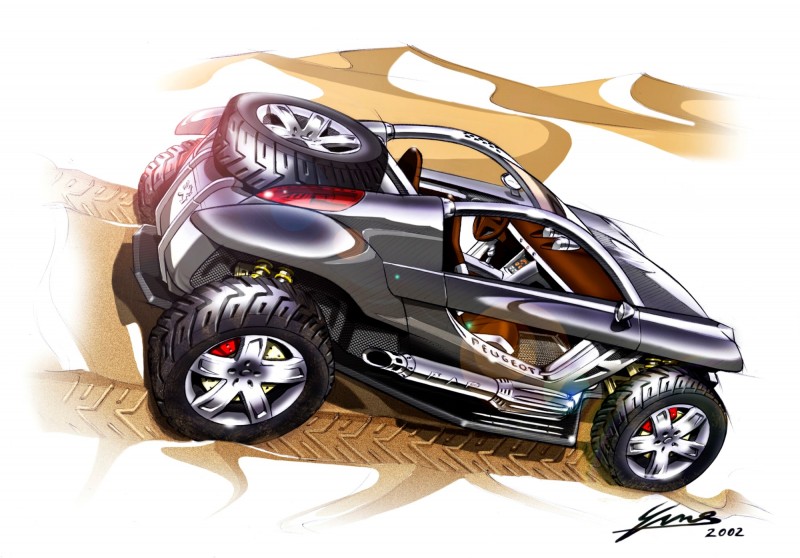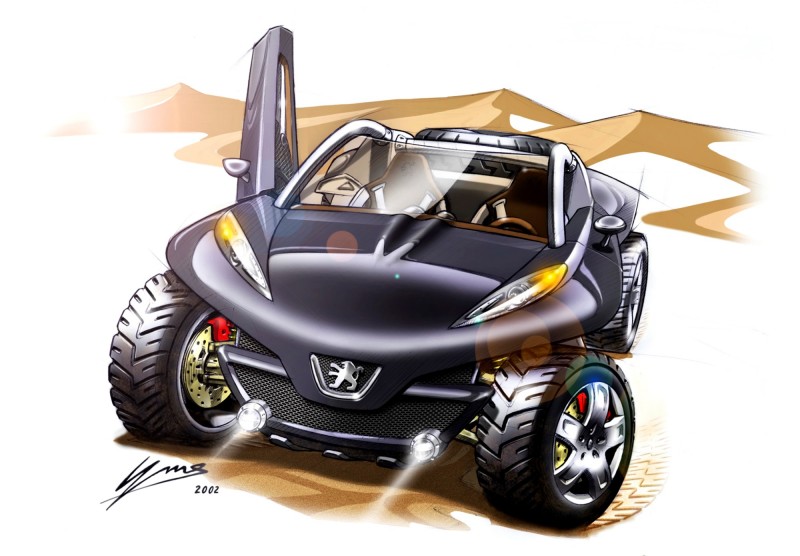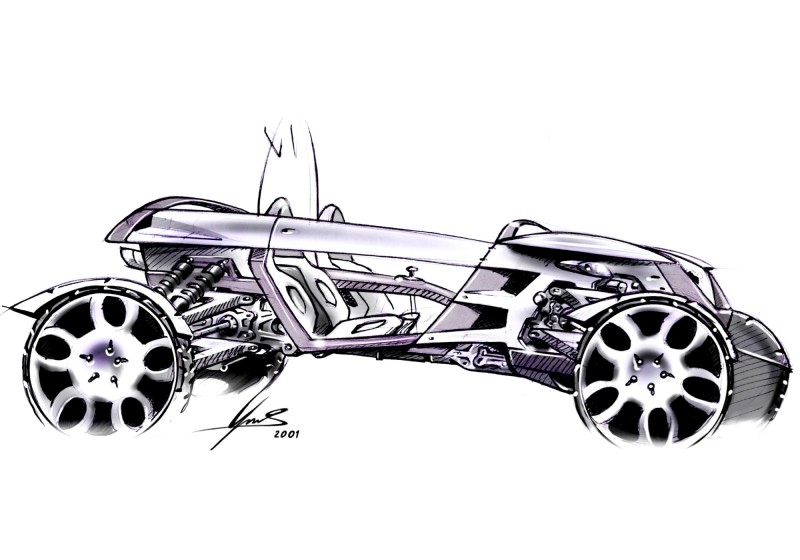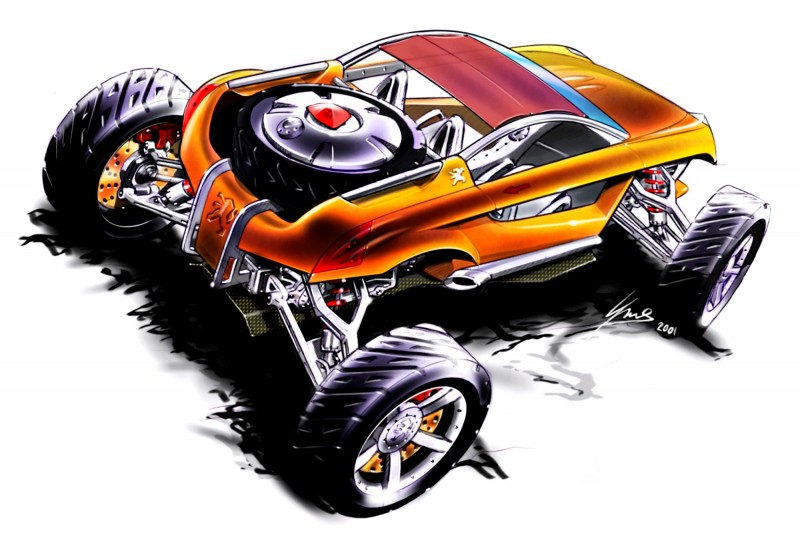 Here is a fun look at a dune buggy from Peugeot more than a decade ago. The brand had long ditched its off-road-race pedigree through the 1990s, and with it any available 4×4 powertrains. The only way they could make this little cabrio a true 4×4 involved some very unique engineering.
Here is a fun look at a dune buggy from Peugeot more than a decade ago. The brand had long ditched its off-road-race pedigree through the 1990s, and with it any available 4×4 powertrains. The only way they could make this little cabrio a true 4×4 involved some very unique engineering.
In what is a strange and exponentially more complex arrangement than a prop shaft, the Hoggar has twin four-cylinder turbodiesel engines. Both mounted transversely – with one on each end. Think of it like the noses of two Peugeot hatchback’s joined by a chromoly chassis in between.
It is certainly an interesting idea, but best suited for the concept show circuit.
Peugeot is back on the dust and sand in January with the 2008 DKR prototype, which leverages some of the Hoggar’s ultra-short proportions and near-vertical approach and departure angles. But unlike this concept, the Red Bull-branded DKR racer is mid-engine and rear-drive.
2015 Peugeot 2008 DKR
2003 Peugeot Hoggar
Hoggar
2003
Overview
Geneva Motor Show
The Peugeot Hoggar is an outrageous and imposing two-seater buggy, powered by two powerful HDi diesel engines capable of driving both the front and rear wheels.
The Hoggar is a particularly compact design, both elegant and dynamic in character and combining strength and robustness in equal measure.
Following the example of the RC Diamonds and RC Spades, the bonnets front end envelops the grille and the distinctive lion badge. Its rear end extends into the passenger compartment by means of dual, rounded sections that pass through the windscreen and culminate in two instrument panels.
The cat-like headlamps resemble half-closed but watchful eyes, while at the rear the flowing design reinforces the Hoggar’s animal nature, always ready to leap from dune to dune.
The modern interior features both metal and leather. Like everything which the passengers are in contact with, the dynamically designed seats are padded and covered with supple leather synonymous with luxury and comfort.
The Hoggar is a two-seater sports car for extreme conditions, with two power trains deployed transversally, one at the front, the other at the rear, giving it the attributes of a 4-wheel drive vehicle.
The car principally consists of a one-piece carbon honeycomb shell reinforced by two upper longitudinal 76 mm diameter roll-over bars made from stainless steel. These bars also serve as an air intake and air inlet for the front engine (left-hand bar) and rear engine (right-hand bar).
At the front of the carbon structure, as at the rear, there is a tubular sub-frame designed to support each power train. Attached to the carbon shell at six points at the front and four at the rear, these sub-frames also accommodate all suspension fittings, including the double wishbones.
Each power train incorporates the same turbocharged four-cylinder diesel HDi engine with double overhead camshafts and sixteen valves. Each displaces 2,168 cc and produces a maximum power of around 180 bhp. The two engines therefore supply a combined power of nearly 360 bhp and a maximum torque of … 800 Nm!
Each engine’s exhaust system has a catalytic converter, a particulate filter (FAP) and a silencer. The left-hand line corresponds to the front engine, while the right-hand line corresponds to the rear engine.
Both radiators are set well back at windscreen level to reduce the length of the front overhang. While the radiators are common to both engines, the one on the right features a low temperature loop to cool the intake air. Air from outside is captured at the front of the vehicle and is supplied to the radiators through an inlet incorporated in the bonnet lining.
Each power train has its own electronics. A global electronic control unit (the supervisor) distributes instructions to both engines from a single accelerator pedal and a single gearbox control. The supervisor controls all safety functions and provides downgrade modes if necessary (for example if running on a single engine). The Hoggar can of course be driven with only one of its two power trains.
Two separate fuel tanks each with a capacity of 80 litres give the vehicle a considerable range in view of the low fuel consumption of the HDi engines.
The two ML 6C gearboxes are controlled electrically via hydraulic actuators. The sequential gear change operates by means of control paddles under the steering wheel or a lever on the central console. A fully automatic mode is also available.
The suspension features double wishbones at the front and rear. Each axle is equipped with an anti-roll bar. The light-alloy wishbones allow generous clearance both in terms of compression (250 mm) and extension (250 mm). To guarantee steering accuracy despite a total travel of 500 mm, each front suspension unit has a detached pivot. The four suspension units are fitted with two spring/gas damper units, each equipped with a gas reservoir. This additional capacity makes it possible to increase the volume of available gas while retaining a compact damper body.
Braking is provided by four ventilated 380 mm discs and six piston brake calipers.
The 21″diameter light-alloy wheels are fitted with Michelin tyres, with a design which matches that of the wheel.
On board this ultra high-tech open-air vehicle, natural leather and aluminium feature strongly. Two people can sit in the one-piece, cast light alloy seats, which have leather upholstery. Each occupant is secured by a safety belt, a true four-point harness connected to four small inertia reels.
The fascia panel features two central rev counters, the left-hand one for the front engine and the right-hand one for the rear engine.
At the top of the central console there is a vertical touch screen. Occupants can navigate between the different pages by means of bookmarks. The main page, displayed by default, is dedicated to driving and contains the speedometer (supplied by the GPS), the odometer, the current destination, the compass and the inclinometer display (pitch and roll). A page dedicated to the input of “way points” on the GPS also contains the cartography.
Another page allows images from the on-board camera to be displayed simultaneously with information from the inclinometers to facilitate difficult manoeuvres. One page is devoted to the selection of on-board music in the form of digital files (MP3 type). Finally, there is a page dedicated to engine operation (coolant, oil temperature, etc). System alerts are displayed as a priority on the screen.
Because the Hoggar is designed as an open-top vehicle, the driver’s position is largely open and the vehicle does not have a roof. The “doors” are in fact two small panels, forming part of the front wings, beneath which the ground can easily be seen. These panels open like gull-wing doors to gain access to the vehicle.








Diode technology is used for all of the vehicle¹s signalling lights. For the direction indicator function, the front headlamps incorporate three orange tinted plexiglass bars, cut like crystal, behind which are located LEDs. The dipped beam and main beam functions have LEDs that illuminate according to steering lock, pitch and roll angles. The cut “crystal” side lights are slightly blue-tinted.
While the rear-view mirrors are traditional, a front camera helps manoeuvres, for example to avoid a small obstacle. Proximity detectors complete the driver comfort functions. The main dimensions of the Hoggar are as follows (m):
Length: 3.96
Width: 2.00
Height: 1.49
Wheelbase: 2.75
Front overhang: 0.96
Rear overhang: 0.52
The kerb weight is 1300 kg

Tom Burkart is the founder and managing editor of Car-Revs-Daily.com, an innovative and rapidly-expanding automotive news magazine.
He holds a Journalism JBA degree from the University of Wisconsin – Madison. Tom currently resides in Charleston, South Carolina with his two amazing dogs, Drake and Tank.
Mr. Burkart is available for all questions and concerns by email Tom(at)car-revs-daily.com.

